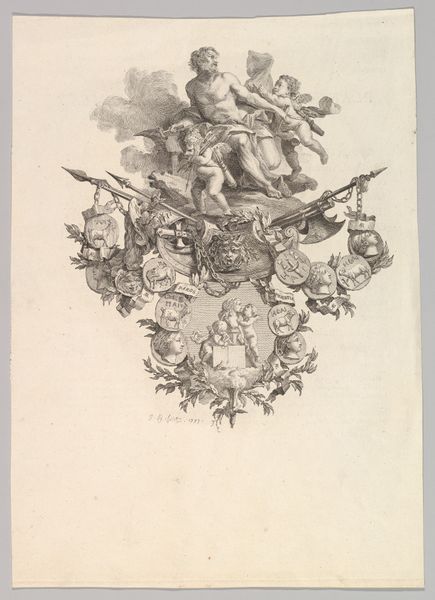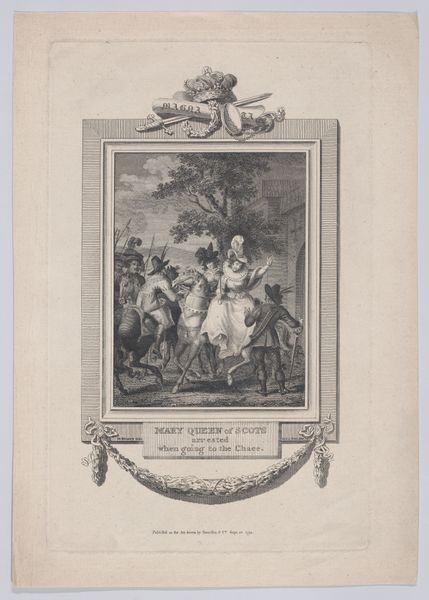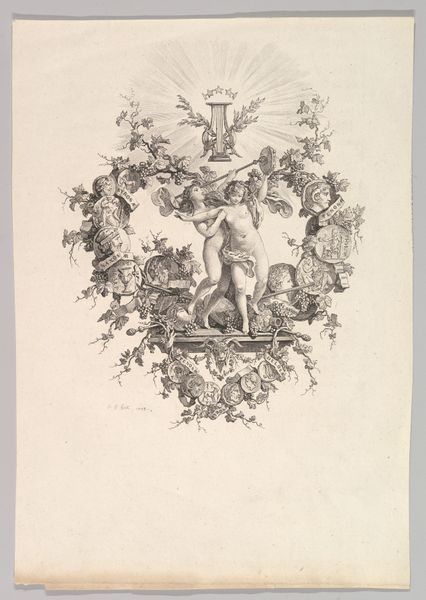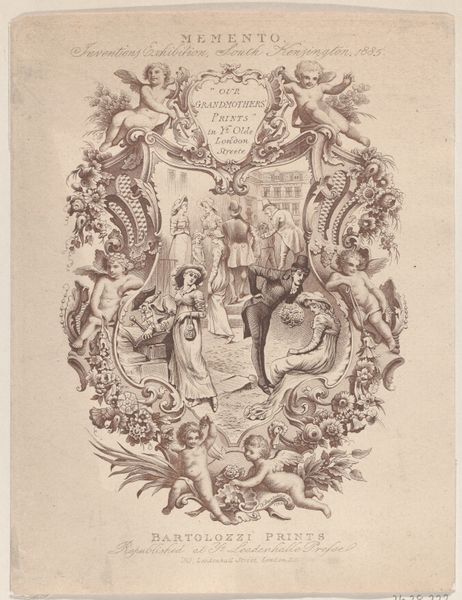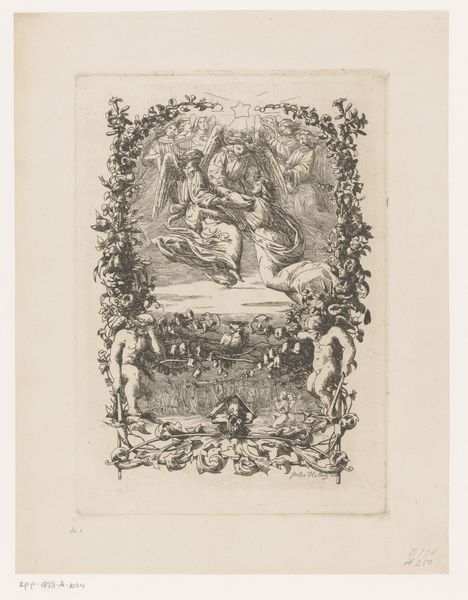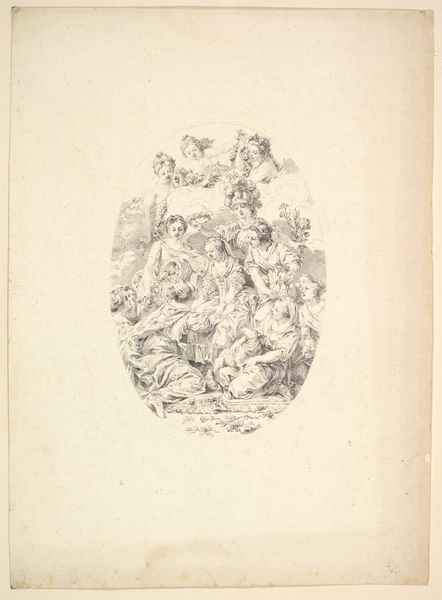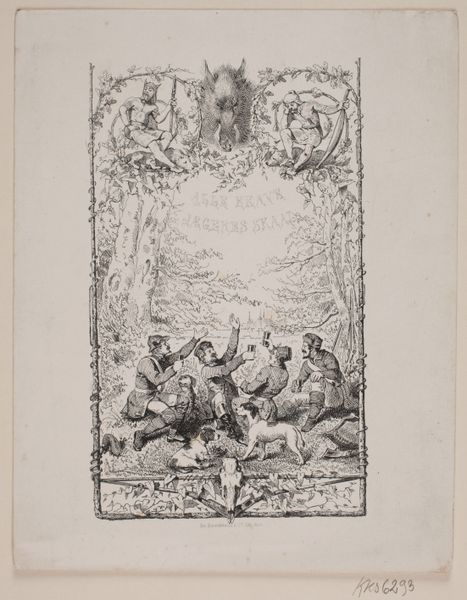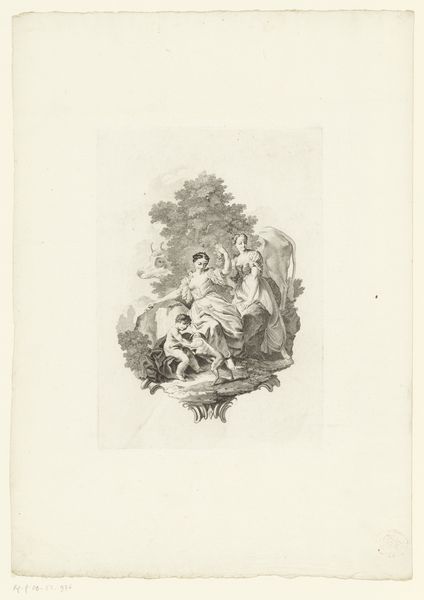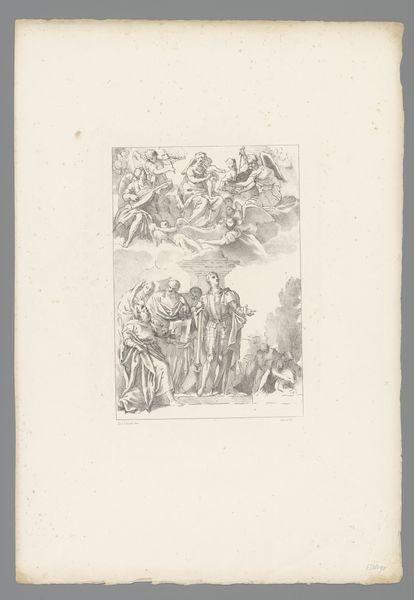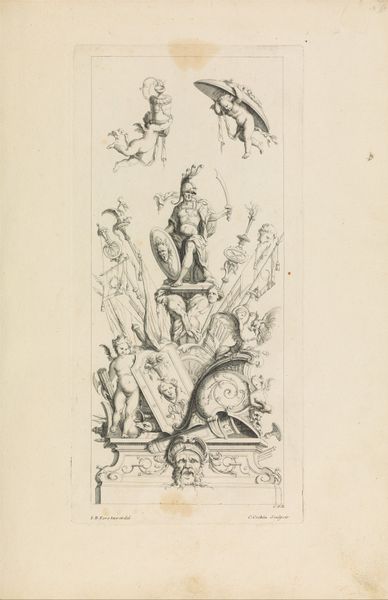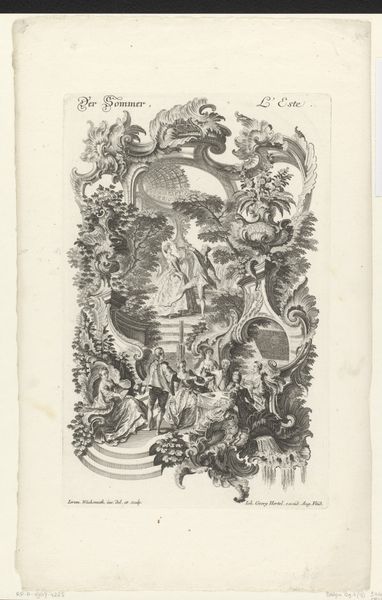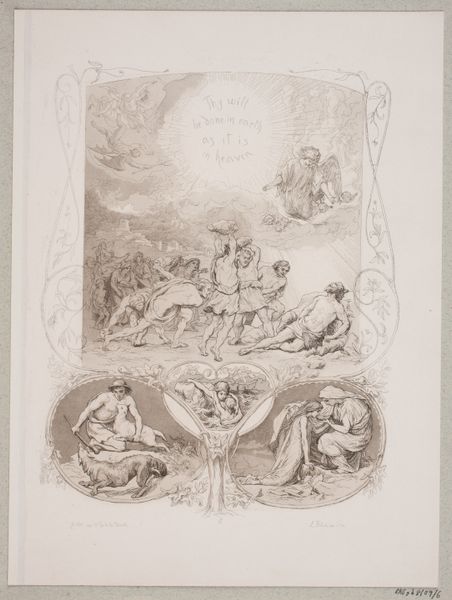
Dimensions: sheet: 13 3/8 x 9 13/16 in. (33.9 x 24.9 cm)
Copyright: Public Domain
Curator: Here we have Jean-Baptiste Huet's "Vignette with Sphinxes and Putti," created in 1779. It's an engraving and etching—a stunning example of Rococo artistry now residing at the Metropolitan Museum of Art. Editor: My immediate reaction is one of playful opulence, almost excessive in its ornamental flourishes. There’s something about the clustered cherubs and mythical beasts that feels very... staged, very much for the aristocratic gaze. Curator: Indeed, that staging is crucial. Huet meticulously balances figuration with allegory, deploying those visual elements within a defined structural framework. Note the symmetry, for example. The placement of sphinxes acts as anchors to the composition, effectively bracketing a string of coins. Editor: Those coins really root it to a specific moment. The piece visually manifests power and wealth – each coin perhaps commemorating particular historical events, like colonial acquisitions – sugar plantations worked by enslaved populations funded these kinds of excesses. How complicit were artists like Huet? Curator: Well, moving away from a historical critique for a moment: I appreciate the technical precision of Huet’s work here. Observe how light and shadow define the forms, lending a certain dynamism to what could otherwise become a static, overly formal design. His delicate lines manage to imbue even the sphinxes with a sense of lightness. Editor: I’d argue against separating a "historical critique." Without addressing the power dynamics, are we really understanding the art, or are we simply admiring pretty technique? Take, for example, the cherubs – symbols of innocence. What does innocence mean, within a system reliant on violence? What ideological work is the artist performing? Curator: Certainly, acknowledging historical context enriches our analysis. But to zero in too exclusively on potential societal implications may prevent a recognition of his artistic strategies and their function in visualizing symbolic form, structure, and materiality. This piece, I contend, goes beyond mere surface aesthetics. Editor: Perhaps we can appreciate both. The artistic mastery undeniably elevates the medium of etching and engraving, creating beautiful light and texture while serving as a stark reminder of the era's moral contradictions and power structures. Ultimately, it reflects a world consumed by empire building.
Comments
No comments
Be the first to comment and join the conversation on the ultimate creative platform.
